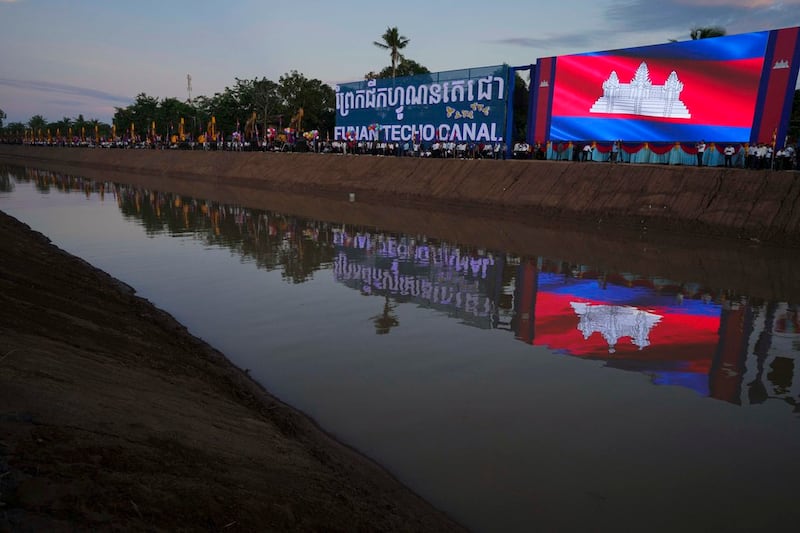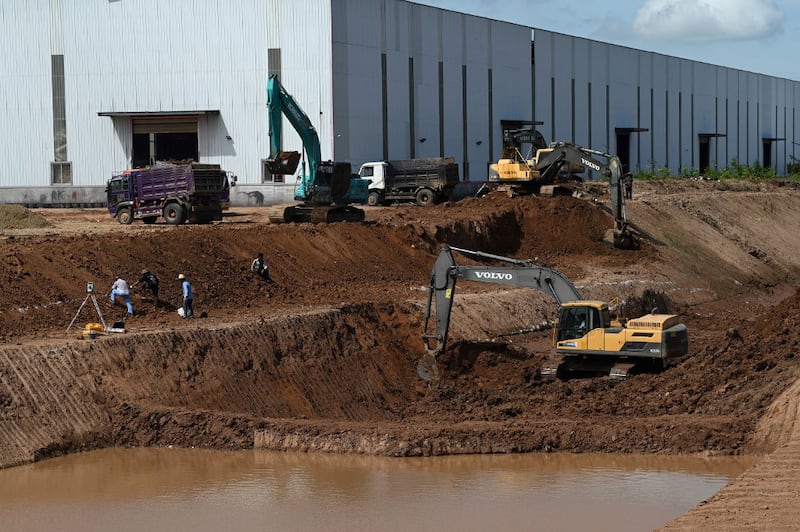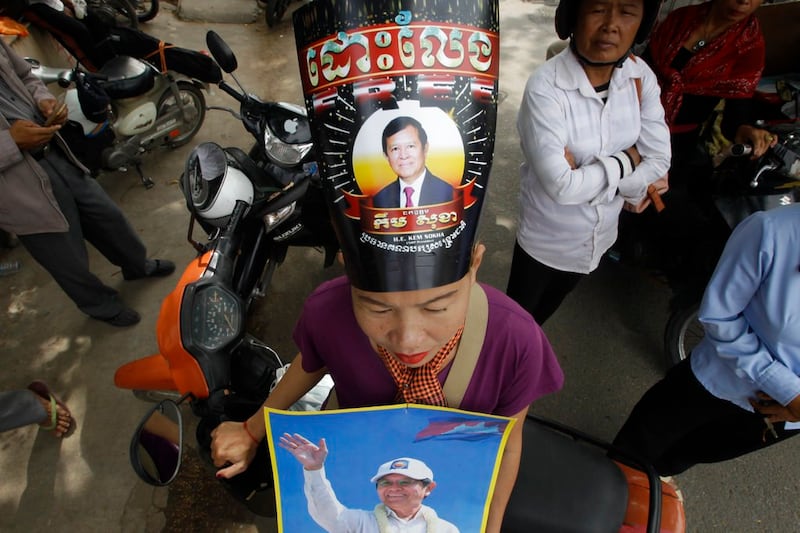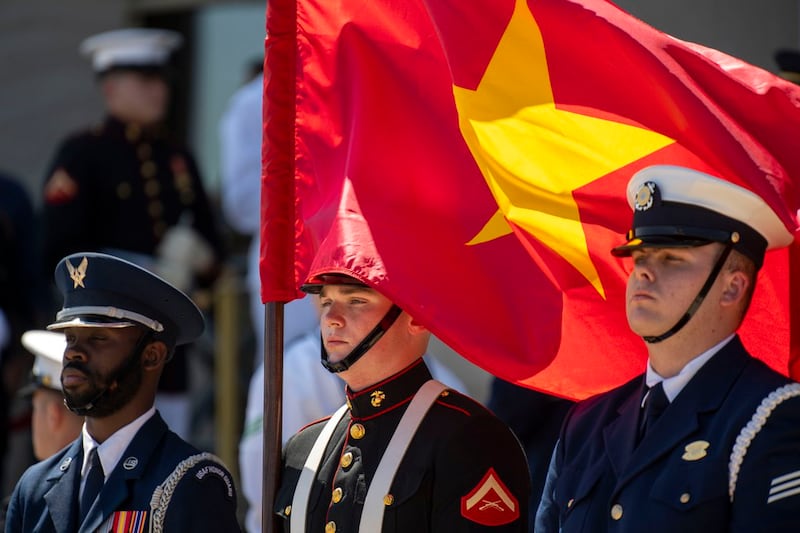I was recently offered documents purporting to show that U.S. intelligence agencies have “been guiding Vietnam to sabotage” the Funan Techo Canal, Cambodia's controversial megaproject that critics say poses a serious ecological threat to Vietnam’s southern rice-growing heartland.
The Vietnamese-language documents offered by an official in Phnom Penh reveal nothing about alleged secret meetings or misinformation campaigns, merely restating Vietnam’s concerns about what its neighbor was doing based on publicly available reports.
It isn’t entirely surprising if Phnom Penh is now pushing the line that complaints about the canal are mostly American propaganda that Washington is helping direct Vietnam to regurgitate.

It may make some psychological sense for Phnom Penh to pretend all the noise is a result of U.S.-China geopolitics and to think that Vietnam, its closest neighbor and increasingly important economic partner, isn’t actually angry at all about Funan Techo.
And Phnom Penh, somewhat justifiably, feels hemmed in by the uproar that followed Prime Minister Hun Manet's announcement in May that construction of the canal will go ahead.
Although China has been funding almost every other megaproject in Cambodia, it refused to pony up most of the money for this one, leaving the Cambodian state to cover the costs that will likely end up being much higher than the $1.7 billion estimate.
Vietnam has made it known in private conversations with Cambodia’s leaders that it is unhappy about how Phnom Penh went about its assessments of the canal’s impact on the Mekong Delta.
Reticent Vietnam
The people of Southeast Asia would “benefit from transparency on any major undertaking with potential implications for regional water management, agricultural sustainability, and security,” a U.S. embassy spokesperson in Phnom Penh said recently.
Yet it’s fanciful for Phnom Penh to think Vietnam doesn’t have concerns of its own about a neighbor’s construction of a 180-km (110-mile) canal near their shared border, or to think that Vietnam needs prodding from America to express these concerns to Cambodia’s government.
More often than not, in fact, it has been Washington that does the ventriloquizing for Hanoi.
One struggles to remember any Vietnamese minister giving a press conference or an official going on the record about Cambodia’s Ream Naval Base. Washington has alleged for years that Phnom Penh will allow China direct access to the base, which Phnom Penh denies.

A Chinese naval presence in Cambodia wouldn’t be ideal for America’s security interests in the region, but the biggest threat would be to Vietnam, which lies just 30 km (18 miles) from the site. A Chinese naval base to its southwest would leave Vietnam pretty much encircled by Chinese forces at sea.
Yet most of what we know of Vietnam’s concerns comes from what the U.S. government has said about the matter.
Likewise, what we know about Vietnam’s concerns over the Funan Techo Canal comes either from its officials speaking anonymously to Vietnam’s state-run media, from the Cambodian government responding publicly to Vietnam’s concerns, or what one can infer from U.S. government statements.
Blaming foreigners
The fact that American statements about the canal focus on the potential ecological and economic impact on Vietnam — hardly a top-line U.S. national security concern — suggests these fears originated in Hanoi.
It’s illogical to maintain that Hanoi would need U.S. intelligence services to warn it of the potential economic and ecological impacts of the canal.
Perhaps this has been discussed between Vietnamese and U.S. officials, but to imagine it’s all an American conspiracy to hammer Cambodia is rather desperate. But it has worked for Cambodia before.
In 2017, the Cambodian government instructed the Supreme Court to forcibly dissolve the country’s largest opposition party, the Cambodia National Rescue Party (CNRP), which might have given the ruling party a tough run at a general election the following year.

The false narrative Phnom Penh constructed was that the CNRP was plotting a “color revolution” with U.S. support. The party’s dissolution came months after Phnom Penh shut down newspapers and civil society groups it has accused of being part of a U.S. plot.
Not a shred of evidence was offered to prove any of this, yet it jibed with the ruling Cambodian People’s Party’s parochial and paternalistic view of Cambodian society: Everyone is peaceful until foreigners start whipping up our locals; its foreigners who convince Cambodians to demand their rights and liberty.
The claim that America is now dripping poisonous misinformation into Hanoi’s ears over the Funan Techo Canal has a similar ring to it. As it implies, Asia would be entirely peaceful if it wasn’t for a captious U.S. pressuring countries in the region to do its bidding.
RELATED STORIES
[ Cambodia’s Funan Techo canal exposes cracks in Vietnam tiesOpens in new window ]
[ Will Cambodia’s Funan Techo canal be a success?Opens in new window ]
[ Cambodian anti-Vietnamese sentiment will stalk Hun Manet beyond trade zone spatOpens in new window ]
[ Cambodia launches ambitious Funan Techo canal projectOpens in new window ]
Chinese whispers
Read between the lines, and what one can also infer is an argument that the region would be entirely happy with China’s behavior if it weren’t for U.S. interference.
Indeed, the Cambodian official who contacted me claimed that “the U.S., in collaboration with Vietnam, is obstructing the Canal Project…to eliminate Chinese influence in Southeast Asia.”
These claims echo Chinese propaganda that asserts that it’s not really Vietnam or the Philippines who wants to assert their sovereignty in the South China Sea in the face of Chinese aggression, but the Americans who are forcing them to challenge China.
Beijing’s line that Vietnam is a proxy of U.S. geopolitical interests now appears to have seeped into some ears in Phnom Penh. Chinese officials are busy telling their Cambodian counterparts that it was the Americans who egged on Vietnam to object to the Funan Techo Canal.

It’s certainly in Beijing’s interest for Phnom Penh to believe this. And it suits Phnom Penh to believe it, too.
But it’s wishful thinking at best.
As construction on the canal proceeds, Vietnam will continue to raise its own legitimate concerns about its neighbor digging up vast stretches of land near its border, and no amount of U.S.-bashing will change that.
David Hutt is a research fellow at the Central European Institute of Asian Studies (CEIAS) and the Southeast Asia Columnist at the Diplomat. He writes the Watching Europe In Southeast Asia newsletter. The views expressed here are his own and do not reflect the position of RFA.
